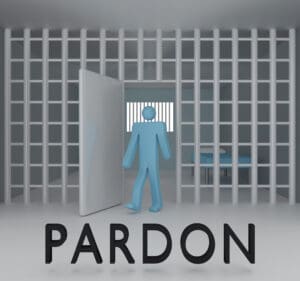When an employee sustains an injury while performing job-related duties, understanding workplace injury compensation rights becomes essential for securing proper benefits and protection. The complex system of laws governing work-related injuries varies by state but shares common principles designed to provide injured workers with medical care, wage replacement, and rehabilitation services. Navigating these systems requires knowledge of both state-specific regulations and federal protections that safeguard employees who have suffered workplace accidents.
Understanding Workers’ Compensation Basics
Workers’ compensation operates as a no-fault insurance system that provides benefits to employees who suffer job-related injuries or illnesses. This system emerged as a compromise between employer and employee interests, offering workers guaranteed benefits regardless of fault while protecting employers from potentially costly lawsuits. The fundamental principle underlying workers’ compensation is straightforward: employees receive medical treatment and partial wage replacement for workplace injuries without needing to prove employer negligence.
The no-fault nature of workers’ compensation distinguishes it from other personal injury claims. Unlike traditional liability cases where proving negligence is essential, workers’ compensation provides benefits even when employee error contributes to the accident. This system recognizes that workplace accidents occur regardless of precautions and focuses on rehabilitation rather than blame. However, this protection comes with limitations—workers generally cannot sue employers for negligence and must accept the prescribed benefits outlined in state statutes.
Every state maintains its own workers’ compensation system with unique rules regarding coverage requirements, benefit calculations, and claim procedures. Despite these variations, most systems cover medical expenses, temporary disability payments, permanent disability benefits, and vocational rehabilitation services. Understanding these basic components provides the foundation for effectively navigating the compensation process after a workplace injury occurs.
Who Qualifies for Workers’ Compensation Benefits
Most employees who suffer injuries while performing job-related duties qualify for workers’ compensation benefits. Coverage typically begins on the first day of employment, with no waiting period required before protection takes effect. However, eligibility depends on proper classification as an employee rather than an independent contractor—a distinction that has become increasingly important in today’s evolving gig economy.
Certain categories of workers face special considerations regarding workers’ compensation eligibility. Federal employees, maritime workers, railroad employees, and longshore workers operate under separate compensation systems with distinct rules and benefits. Additionally, some states exempt small businesses with few employees, agricultural workers, domestic workers, or seasonal employees from mandatory coverage requirements. These exemptions vary significantly by jurisdiction, making it essential to understand local regulations.
The injury itself must arise “out of and in the course of employment” to qualify for benefits. This standard generally covers accidents that occur while performing work duties, but may exclude injuries sustained during commutes (with some exceptions), voluntary recreational activities, or incidents resulting from intoxication or intentional self-harm. The connection between employment and injury represents a critical threshold question in many disputed compensation claims.
Common Types of Workplace Injuries
Workplace accidents result in a wide spectrum of injuries ranging from minor to catastrophic. Among the most prevalent are musculoskeletal injuries, including sprains, strains, and tears affecting muscles, tendons, and ligaments. These injuries frequently result from overexertion, repetitive motions, or improper lifting techniques. Construction sites, manufacturing facilities, and healthcare settings report particularly high rates of these injuries due to the physical demands placed on workers.
Slip and fall accidents constitute another major category of workplace injuries, often resulting in fractures, contusions, or head trauma. These incidents commonly occur due to wet floors, uneven surfaces, poor lighting, or obstacles in walkways. While such accidents can happen in any workplace, certain industries face elevated risks, particularly those involving outdoor work, changing environmental conditions, or frequent movement between different work areas.
Exposure to harmful substances or environments represents a significant injury category with potentially long-term consequences. This includes chemical burns, respiratory conditions from toxic fumes, hearing loss from excessive noise, and illnesses resulting from pathogen exposure. Unlike acute injuries with immediate symptoms, these exposure-related conditions may develop gradually, complicating the process of connecting them to specific workplace incidents or conditions.
The Workers’ Compensation Claim Process
The workers’ compensation claim process begins with prompt injury reporting. Most states establish strict notification deadlines, typically ranging from 30 to 90 days, though immediate reporting serves the employee’s best interests. This initial report triggers the employer’s obligation to provide claim forms and information about seeking medical treatment. Completing these forms accurately and thoroughly establishes the official record of injury and initiates the formal claim process.
After reporting, seeking appropriate medical care becomes the next critical step. Depending on state regulations and employer policies, injured workers may need to visit designated healthcare providers or facilities for treatment. Some jurisdictions allow employers to direct initial care but permit employees to choose their providers after a specified period. Following provider instructions and attending all scheduled appointments proves essential for both recovery and maintaining benefit eligibility.
The insurance carrier investigates the claim by reviewing medical records, accident reports, and sometimes conducting interviews with the injured worker, witnesses, or supervisors. Based on this investigation, the carrier issues an acceptance or denial decision. Accepted claims proceed to benefit determination and payment, while denied claims may require appeal through administrative hearings or litigation. Throughout this process, maintaining detailed records of all communications, medical visits, and work restrictions provides valuable documentation if disputes arise.
Types of Workers’ Compensation Benefits
Medical benefits constitute the foundation of workers’ compensation, covering all reasonable and necessary treatment related to the workplace injury. This typically includes emergency care, hospitalization, surgery, medication, physical therapy, and medical equipment. Unlike health insurance, workers’ compensation medical benefits come without deductibles or copayments, providing complete coverage for authorized treatment. These benefits continue as long as medical evidence supports the need for ongoing care related to the work injury.
Wage replacement benefits provide partial compensation for lost income during recovery periods. These benefits, often called temporary disability payments, typically replace two-thirds of the worker’s average weekly wage, subject to state-established minimum and maximum amounts. Payment begins after a brief waiting period (usually 3-7 days) and continues until the worker returns to employment or reaches maximum medical improvement. The tax-free status of these benefits partially offsets their reduced replacement rate.
Permanent disability benefits become available when injuries result in lasting impairments that affect earning capacity. These benefits fall into two categories: permanent partial disability for workers who can still perform some work despite limitations, and permanent total disability for those unable to maintain any substantial employment. Calculation methods vary significantly by state, with some using impairment ratings assigned by physicians and others focusing on lost earning capacity. These benefits may be paid as lump sums or structured payments over extended periods.
Navigating Medical Treatment Under Workers’ Compensation
Medical treatment under workers’ compensation follows specific protocols that differ from standard healthcare practices. In many states, employers or insurers maintain medical provider networks (MPNs) from which injured workers must select treating physicians. These networks consist of providers who specialize in occupational medicine and understand workers’ compensation reporting requirements. The right to choose a physician varies by jurisdiction, with some states allowing immediate employee choice and others requiring treatment within employer-selected networks for specified periods.
Treatment authorization represents a critical aspect of workers’ compensation medical care. Certain procedures, especially surgeries, diagnostic tests, and specialized treatments, require pre-approval from the insurance carrier. This utilization review process evaluates the medical necessity of proposed treatments based on evidence-based guidelines. Denials can be appealed through various mechanisms, including independent medical reviews conducted by physicians not associated with the insurance company.
The treating physician plays a pivotal role beyond providing medical care, as their opinions regarding work status, physical restrictions, and permanent impairment significantly influence benefit determinations. These physicians document the injury’s cause, necessary treatment, recovery progress, and any resulting limitations. Given this influence, some jurisdictions have implemented procedures for changing treating physicians when disputes arise about appropriate care or recovery expectations.
Temporary and Permanent Disability Classifications
Temporary disability benefits address the recovery period when injured workers cannot perform their regular job duties. Temporary total disability (TTD) applies when the employee cannot work at all during recovery, while temporary partial disability (TPD) covers situations where modified duties are possible but at reduced hours or wages. These benefits continue until the worker either returns to full duty, reaches maximum medical improvement, or transitions to permanent disability status.
The concept of maximum medical improvement (MMI) marks a significant transition point in workers’ compensation claims. MMI occurs when the treating physician determines that the condition has stabilized and no further significant improvement is expected with additional treatment. This determination does not necessarily mean complete recovery but indicates that the injury has healed as much as medically possible. Once MMI is established, temporary benefits typically end, and permanent disability evaluation begins.
Permanent disability assessment involves measuring the lasting effects of workplace injuries on earning capacity. This evaluation considers the nature and extent of physical or mental limitations, the worker’s age, education, skills, and employment history. Most states use impairment ratings based on medical guidelines to quantify disability percentages, which then translate to specific benefit amounts. These assessments often generate disputes, as small percentage differences can significantly impact compensation amounts and duration.
Third-Party Liability Claims in Workplace Accidents
While workers’ compensation provides the exclusive remedy against employers, injured workers may pursue additional compensation through third-party liability claims when entities other than the employer contribute to workplace accidents. These claims follow traditional personal injury principles, requiring proof of negligence and allowing recovery for damages not available through workers’ compensation, including full wage loss, pain and suffering, and loss of enjoyment of life.
Common scenarios for third-party claims include injuries caused by defective equipment or machinery (product liability), accidents on properties owned by entities other than the employer (premises liability), and incidents involving contractors or subcontractors working alongside the injured employee. Construction sites frequently present these complex liability situations due to the presence of multiple companies performing different functions within shared workspaces.
Pursuing both workers’ compensation and third-party claims simultaneously requires careful coordination. Most states implement subrogation rights that allow workers’ compensation insurers to recover benefits paid from third-party settlements or judgments. This creates a complex interplay between the two claims, often necessitating structured settlements that protect the injured worker’s interests while satisfying the insurer’s reimbursement rights. Despite these complications, third-party claims often provide substantial additional compensation that justifies the more complex litigation process.
Denied Claims and the Appeals Process
Insurance carriers deny workers’ compensation claims for various reasons, including disputes about whether injuries are work-related, missed filing deadlines, or questions about medical necessity. When denials occur, workers have the right to appeal through administrative procedures established by state workers’ compensation agencies. Understanding these appeal mechanisms becomes essential for protecting benefit rights when initial claims face rejection.
The appeals process typically begins with an administrative hearing before a workers’ compensation judge or hearing officer. These proceedings, while less formal than court trials, involve presentation of medical evidence, witness testimony, and legal arguments. Both sides may present expert witnesses, particularly physicians who can address causation questions or treatment appropriateness. The hearing officer then issues a decision either upholding the denial or ordering benefit payment.
Further appeals beyond the initial hearing follow different pathways depending on state systems. Most jurisdictions provide for review by a workers’ compensation appeals board or commission, followed by potential appeals to state courts. Each appeal level typically has strict deadlines and specific procedural requirements. Success rates diminish at higher appeal levels, making thorough preparation and effective representation at the initial hearing particularly important for injured workers challenging claim denials.
Emerging Trends in Workers’ Compensation for 2025
As we move through 2025, several significant trends are reshaping the workers’ compensation landscape. Artificial intelligence is transforming claims processing, with predictive analytics helping identify high-risk situations before accidents occur and streamlining the management of existing claims. This technology enables more proactive risk mitigation strategies while reducing administrative burdens and improving response times for injured workers.
The expansion of mental health coverage represents another important development in workers’ compensation. Beginning in 2025, states like New York have expanded coverage to include specific types of mental injuries caused by extraordinary work-related stress. This significant shift acknowledges the legitimate impact of psychological injuries in the workplace and provides a pathway for affected employees to receive necessary treatment and benefits beyond the traditional physical injury model.
The continued evolution of remote work arrangements has created new challenges for workers’ compensation systems. Injuries occurring in home offices raise questions about work-relatedness and employer control over safety conditions. Claims related to ergonomic injuries from improper home workstations, mental health issues stemming from isolation, and the blurred boundaries between personal and professional activities all require reconsideration of traditional workers’ compensation principles. Employers and insurers continue adapting policies to address these emerging realities of the modern workplace.
Employer Responsibilities and Safety Programs
Employers bear primary responsibility for workplace safety and maintaining appropriate workers’ compensation coverage. State laws typically require businesses to either purchase insurance from authorized providers or demonstrate financial capacity for self-insurance. Failure to maintain coverage can result in significant penalties, including fines, stop-work orders, and personal liability for business owners. Beyond these legal requirements, effective risk management serves employers’ financial interests by reducing premium costs through lower claim frequencies.
Proactive safety programs represent the most effective approach to reducing workplace injuries and controlling compensation costs. These programs include regular safety training, hazard identification and correction, proper equipment maintenance, and clear emergency response procedures. Many states offer premium discounts for employers who implement comprehensive safety initiatives or participate in drug-free workplace programs. These incentives recognize that prevention ultimately costs less than compensation for preventable injuries.
When injuries occur despite preventive efforts, employers must fulfill specific obligations to facilitate proper claim handling. These responsibilities include promptly reporting incidents to insurance carriers, providing claim forms to injured workers, maintaining communication during recovery periods, and accommodating work restrictions during transitional return-to-work phases. Employers who understand these obligations and approach injured workers with support rather than suspicion typically experience better outcomes in terms of both claim costs and employee relations.
Return to Work Programs and Accommodations
Well-designed return to work programs benefit both employers and injured workers by facilitating recovery while minimizing productivity losses. These programs provide modified or alternative duties that accommodate medical restrictions during healing periods. Research consistently demonstrates that appropriate early return to work leads to better physical outcomes, reduced disability durations, and lower claim costs compared to extended absence periods.
Effective return to work programs begin with clear policies established before injuries occur. These policies outline the process for identifying suitable transitional assignments, communicating with medical providers about work capabilities, and monitoring progress toward full duty resumption. The most successful programs involve collaboration between supervisors, human resources personnel, claims administrators, and healthcare providers to ensure appropriate accommodations that respect medical limitations while providing meaningful work.
The Americans with Disabilities Act (ADA) intersects with workers’ compensation when injuries result in lasting impairments that meet the law’s definition of disability. While workers’ compensation focuses on providing benefits for work-related conditions, the ADA creates additional obligations for employers to provide reasonable accommodations that enable qualified individuals to perform essential job functions. These dual systems sometimes create confusion, as workers’ compensation restrictions and ADA accommodations follow different standards and procedures. Understanding both systems helps employers develop compliant approaches to managing workplace injuries with long-term implications.
Legal Representation in Workers’ Compensation Cases
While the workers’ compensation system was designed to function without litigation, complex cases often benefit from legal representation. Workers’ compensation attorneys specialize in navigating claim procedures, challenging improper benefit calculations, and appealing unjustified denials. These specialists understand the medical-legal aspects of workplace injuries and can effectively counter insurance company tactics that minimize benefit payments.
Attorney involvement becomes particularly valuable in cases involving serious injuries with permanent implications, disputed causation questions, or denied claims. Legal representatives can secure independent medical examinations, depose expert witnesses, research similar precedent cases, and present compelling evidence at hearings. For catastrophic injuries resulting in permanent disability, the difference between properly and improperly handled claims can amount to hundreds of thousands of dollars in lifetime benefits.
Most workers’ compensation attorneys operate on contingency fee arrangements regulated by state law. These fees typically range from 10% to 25% of disputed benefits recovered, with many states requiring fee approval by the workers’ compensation agency. This structure makes legal representation accessible to injured workers without upfront costs while ensuring that attorneys only receive payment when they successfully secure additional benefits. Understanding fee structures and service expectations helps injured workers make informed decisions about seeking legal assistance.
Recent Legislative Changes Affecting Compensation Rights
Legislative activity continues reshaping workers’ compensation systems nationwide, with several significant changes taking effect in 2025. California has expanded workers’ compensation notice requirements to include attorney consultation provisions, ensuring injured workers understand their rights to seek legal guidance. The state has also modified requirements for reemployment after injury, providing clearer pathways for workers to return to suitable positions after recovery periods.
Mental health parity represents a growing legislative trend, with multiple states expanding coverage for psychological injuries. New York’s landmark legislation extending mental stress coverage to all employees exemplifies this shift toward recognizing the legitimate impact of workplace psychological trauma. These changes acknowledge evolving understanding of occupational health to include both physical and mental wellbeing as compensable aspects of work-related harm.
Telemedicine expansion continues influencing workers’ compensation medical delivery, with updated regulations facilitating remote consultations for injury assessment and treatment monitoring. These provisions, accelerated by pandemic-era necessity, have become permanent features of many state systems due to their demonstrated effectiveness in reducing treatment delays and improving access to specialized care. The integration of telehealth options particularly benefits workers in rural areas who previously faced significant travel burdens for specialized treatment.
Protecting Your Rights After a Workplace Injury
Taking specific actions immediately following workplace injuries significantly impacts claim outcomes. First, report the incident to supervisors or management as soon as possible, providing detailed information about how, when, and where the injury occurred. This prompt notification establishes the official record and initiates the claim process. Even seemingly minor injuries warrant reporting, as some conditions worsen over time or reveal complications days after the initial incident.
Seeking appropriate medical care represents the next critical step, both for health protection and claim documentation. Follow employer instructions regarding designated providers if required by state law, but ensure you receive necessary treatment regardless of authorization delays. During medical visits, clearly explain how the injury relates to work activities and follow all treatment recommendations. Maintaining detailed records of symptoms, limitations, and recovery progress provides valuable documentation for benefit determinations.
Throughout the claim process, maintain copies of all forms, correspondence, medical reports, and work restrictions. Document conversations with employers, insurance representatives, and healthcare providers, noting dates, participants, and key points discussed. If disputes arise about benefit amounts, treatment approvals, or return to work expectations, consider consulting with a workers’ compensation attorney to evaluate your options. Understanding that the system can be complex and sometimes adversarial helps injured workers approach the process with appropriate caution and preparation.
Calculating Compensation Amounts and Duration
Benefit calculations follow formulas established by state law, typically based on the worker’s average weekly wage before the injury. Most states set wage replacement at approximately two-thirds of pre-injury earnings, subject to maximum and minimum thresholds that adjust periodically for inflation or wage growth. These calculations become more complex for workers with variable earnings, multiple jobs, or recent employment changes, sometimes requiring wage documentation from several months preceding the injury.
Benefit duration depends on injury classification and recovery progress. Temporary disability benefits continue until the worker returns to employment, reaches maximum medical improvement, or exhausts the maximum benefit period established by state law. These maximum periods vary significantly, ranging from 104 weeks in some states to 500 weeks or more in others. Some jurisdictions also implement benefit step-downs that reduce payment percentages for extended claims beyond specified thresholds.
Permanent disability benefits follow different calculation methods depending on whether the condition is classified as partial or total. Permanent partial disability typically uses a scheduled system that assigns specific values to particular body parts or functions, with payments based on impairment percentages. Permanent total disability may provide lifetime benefits in catastrophic cases, though many states have implemented caps or reduction formulas for long-term claims. Understanding these complex calculations helps injured workers evaluate whether benefit determinations accurately reflect their situations.
The Future of Workplace Safety and Compensation
Technological advancements continue transforming workplace safety practices, with wearable devices monitoring environmental hazards and employee biometrics to identify potential injury risks before accidents occur. These preventive technologies, including exoskeletons that reduce physical strain during lifting tasks and virtual reality systems for hazard recognition training, represent the cutting edge of occupational safety evolution. As these technologies mature, they promise significant reductions in injury rates across various industries.
The growing recognition of workplace mental health issues reflects broader societal acknowledgment of psychological wellbeing’s importance. Beyond the expansion of compensable mental stress claims, employers increasingly implement preventive approaches including resilience training, stress management resources, and workplace culture improvements designed to reduce psychological injury risks. These developments signal a more holistic understanding of occupational health that encompasses both physical and mental dimensions.
Climate change impacts are creating new occupational hazards requiring adaptive compensation approaches. Increased frequency of extreme weather events exposes outdoor workers to heightened heat stress, air quality hazards from wildfires, and severe weather dangers. Workers’ compensation systems are evolving to address these emerging risks through expanded presumptions for certain exposure-related conditions and modified standards for work-relatedness in environmental injury cases. These adaptations reflect the dynamic nature of workplace safety challenges in a changing world.
Conclusion: Securing Your Future After Workplace Injury
Navigating the workers’ compensation system effectively requires understanding both your rights and responsibilities following workplace injuries. The system, while sometimes complex, provides essential protections designed to facilitate recovery and maintain financial stability during work absence. By promptly reporting injuries, seeking appropriate medical care, following treatment recommendations, and understanding benefit structures, injured workers position themselves for optimal outcomes within the system’s framework.
When challenges arise during the claims process, various resources can provide assistance. State workers’ compensation agencies offer information services to explain benefit rights and address procedural questions. Many states maintain ombudsman programs specifically designed to help unrepresented workers navigate system complexities. For more complicated situations, consulting with experienced workers’ compensation attorneys provides specialized guidance tailored to individual circumstances and state-specific regulations.
The ultimate goal of workers’ compensation extends beyond temporary benefit provision to support complete recovery and successful return to productive employment. When injuries result in permanent limitations, the system should provide appropriate compensation while facilitating adaptation to new work capabilities. By understanding available benefits, actively participating in treatment plans, and advocating for necessary accommodations, injured workers can achieve the best possible outcomes despite the challenges that workplace injuries present.
Citations:
- https://carrierchronicles.com/6-trends-shaping-workers-compensation-in-2025/
- https://www.thehadilawfirm.com/top-personal-injury-trends-to-watch-in-2025/
- https://www.nfib.com/news-article/new-york-expands-workers-compensation-for-work-related-mental-stress-to-all-employees-beginning-in-2025/
- https://www.shayandassociates.com/post/new-year-new-laws-what-personal-injury-victims-should-know-about-legal-changes-in-2025
- https://www.littler.com/publication-press/publication/employment-law-update-new-laws-2025
- https://www.littler.com/publication-press/publication/new-york-significantly-expands-workers-compensation-coverage-work
- https://skyscraperinsurance.com/emerging-workers-compensation-trends-in-2025-what-employers-need-to-know/
- https://www.wolterskluwer.com/en/expert-insights/what-you-need-to-know-about-workers-compensation-laws
- https://www.hklaw.com/en/insights/publications/2024/12/a-look-at-new-california-labor-and-employment-laws-for-2025
- https://labor.hawaii.gov/dcd/home/aboutwc/
- https://www.clydeco.com/en/insights/2025/03/top-5-recent-workplace-developments-march-2025
- https://news.leavitt.com/business-insurance/keeping-pace-with-workers-compensation-trends-in-2025/
- https://kbaattorneys.com/2025-legal-trends-beyond-personal-injury-law/
- https://www.insurancejournal.com/workers-comp/
- https://workcompcollege.com/bobs-top-ten-predictions-for-2025/
- https://www.foodprocessingbihar.com/fecp-benefits-increase-in-2025/
- https://www.cbiz.com/insights/articles/article-details/tips-trends-for-the-workers-compensation-insurance-market-property-casualty
- https://www.segalllaw.com/2025/01/trends-workers-comp-laws-2025-east-coast/
- https://www.dir.ca.gov/DIRNews/2025/2025-31.html
- https://www.insurancejournal.com/archive/workers-comp/popular/year/
- https://mckaylawtx.com/common-personal-injury-cases-in-2025/
- https://www.reuters.com/legal/legalindustry/changes-state-workers-compensation-insurance-rates-laws-reflect-national-trends-2025-01-07/
- https://www.arnoldporter.com/en/perspectives/advisories/2025/01/new-california-workplace-laws-in-2025
- https://www.pacificworkers.com/blog/2024/december/2025-a-new-era-for-california-workers-compensati/
- https://www.workcompprofessionals.com/five-challenges-for-workers-comp-in-2025-part-1-1-5/
- https://www.ksa-atty.com/blog/california-workers-comp-laws/
- https://www.burge-law.com/what-is-the-workers-compensation-act-in-the-us/
- https://www.irmi.com/articles/expert-commentary/20-workers-comp-issues-to-watch-in-2025
- https://programbusiness.com/news/national-workers-compensation-rates-and-laws-in-flux-for-2025/
- https://www.linkedin.com/pulse/5-must-know-workers-compensation-regulations-coming-4wpvf
- https://www.mcgowanprograms.com/blog/emerging-workers-comp-trends-what-to-expect-in-2025/
- https://www.waynehardeelaw.com/blog-topics/personal-injury-blog/new-year-new-legal-landscape-what-to-expect-in-2025-for-personal-injury-law/
- https://legiscan.com/HI/text/HB13/2025




















